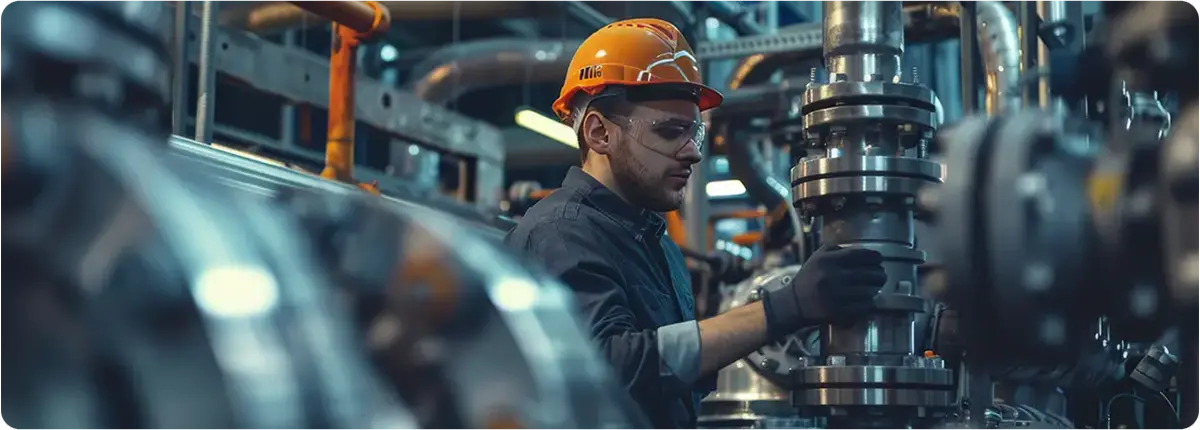Maintenance and Troubleshooting Strategies for Industrial Fluid Systems
Industrial fluid systems, consisting of valves, regulators, filters, fittings, and pipelines, are the lifelines of critical industries such as water treatment, petrochemicals, energy production, and food processing. These systems must operate continuously and reliably, as even minor malfunctions can lead to costly downtime, safety hazards, and reduced productivity.
The foundation for a long-lasting and efficient fluid system lies in proper installation, planned maintenance, and early fault detection. This article outlines proven strategies to help operators enhance system reliability, extend component life, and reduce operational risks.

PROPER INSTALLATION: THE FIRST STEP TO RELIABILITY
The service life of any fluid system starts with correct installation. Poorly executed assembly can cause premature failures, high maintenance costs, and unnecessary shutdowns.
Key installation practices include:
- Material Compatibility: Select materials that match the fluid’s chemical properties, temperature, and pressure. For example, hydrogen systems require specialized seals and body materials to prevent molecular leakage.
- Component Matching: Valves, regulators, and fittings must be rated for the same pressure and temperature class.
- Correct Tightening: Over-tightening can deform seals, while under-tightening can lead to leaks. Follow manufacturer torque specifications and use tools such as gap inspection gauges.
- Vibration Control: Use proper supports to secure valves and piping, preventing loosening over time.
- Accessibility for Maintenance: Place components in locations that allow safe and easy servicing.
PREVENTIVE AND PREDICTIVE MAINTENANCE
Maintenance should be proactive, not reactive. A structured maintenance plan reduces downtime, prevents costly repairs, and extends the lifespan of equipment.
Preventive Maintenance Steps:
- Inspect seals and joints for leaks
- Test manual, pneumatic, or electric actuators
- Verify smooth valve operation
- Lubricate moving parts to minimize friction
Predictive Maintenance Techniques:
- Vibration Monitoring: Detect mechanical wear before it becomes critical
- Pressure and Temperature Sensors: Identify abnormal variations in real time
- Ultrasonic Leak Detection: Locate microscopic leaks that are invisible to the human eye
FAULT PREVENTION AND EARLY DETECTION
Valve leaks are among the most common issues in industrial fluid systems and typically fall into two categories:
- Seat Leak: Fluid passes through a closed valve due to seal failure
- Shell Leak: Fluid escapes from the valve body or stem into the environment
Leak Prevention Tips:
- Choose the right materials and sealing solutions
- Install filters to protect valve seats and internal surfaces
- Ensure correct flow direction during installation
- Conduct pressure testing after assembly
TAGGING AND TRACEABILITY
Proper tagging of valves and key components streamlines maintenance and replacement activities.
Effective tags should include:
- Part number
- Manufacturing date
- Batch or order number
- Operating pressure and temperature
- Type of fluid handled
REPAIR OR REPLACE?
Not all failures require full component replacement—many issues can be resolved through repair. However, replacement is the better option when:
- Severe corrosion compromises pressure containment
- Contamination cannot be effectively removed
- Connection ends are damaged beyond repair
- Repair costs approach the cost of a new component
CONCLUSION: SAFETY, EFFICIENCY, AND COST CONTROL
By combining proper installation, regular maintenance, and advanced diagnostic techniques, operators can maximize system efficiency, ensure safety, and minimize unplanned downtime.
Convalve provides high-quality, standards-compliant industrial valves designed for durability, ease of maintenance, and long service life—making them a trusted choice for fluid system applications worldwide.
 Convalve
Convalve Convalve
Convalve